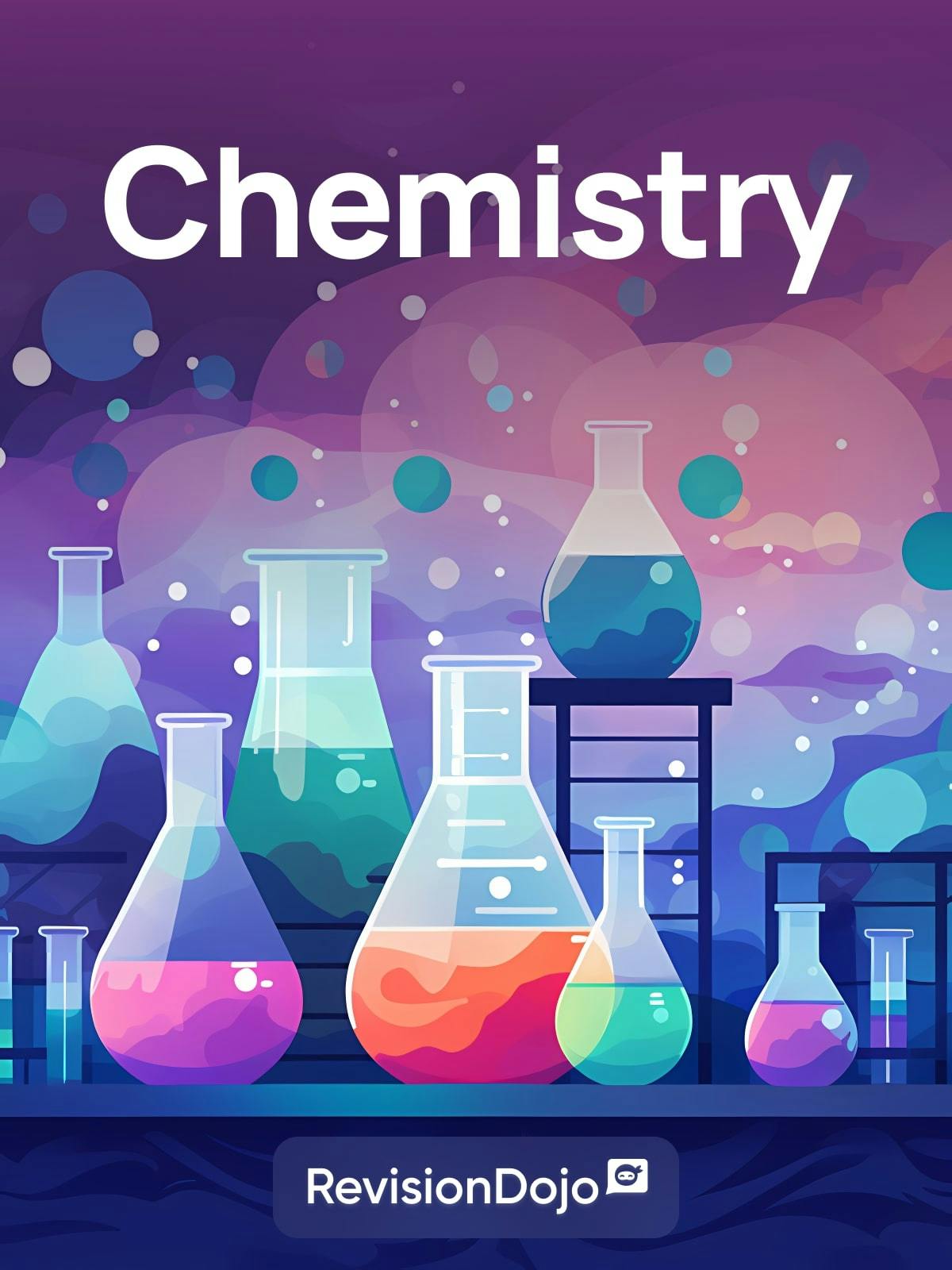
Topic 1 - Stoichiometric relationships
Question 1
SLPaper 1What is the number of hydrogen atoms in 2.00 moles of Ca(HCO3)2?
Avogadro’s constant, L or NA: 6.02 × 1023 mol−1
Question 2
HLPaper 2Magnetite, Fe3O4, is another ore of iron that contains both Fe2+ and Fe3+.
Iron exists as several isotopes.
Deduce the ratio of Fe2+:Fe3+ in Fe3O4.
State the type of spectroscopy that could be used to determine their relative abundances.
b(i).
State the number of protons, neutrons and electrons in each species.

b(ii).
Iron has a relatively small specific heat capacity; the temperature of a 50 g sample rises by 44.4°C when it absorbs 1 kJ of heat energy.
Determine the specific heat capacity of iron, in J g−1 K−1. Use section 1 of the data booklet.
A voltaic cell is set up between the Fe2+ (aq) | Fe (s) and Fe3+ (aq) | Fe2+ (aq) half-cells.
Deduce the equation and the cell potential of the spontaneous reaction. Use section 24 of the data booklet.

The figure shows an apparatus that could be used to electroplate iron with zinc. Label the figure with the required substances.

Outline why, unlike typical transition metals, zinc compounds are not coloured.
Transition metals like iron can form complex ions. Discuss the bonding between transition metals and their ligands in terms of acid-base theory.
Question 3
SLPaper 1The complete combustion of 15.0cm3 of a gaseous hydrocarbon X produces 60.0 cm3 of carbon dioxide gas and 75.0 cm3 of water vapour. What is the molecular formula of X? (All volumes are measured at the same temperature and pressure.)
Question 4
SLPaper 1What is the molar mass, in g mol-1 , of a compound if 0.200 mol of the compound has a mass of 13.2 g?
Question 5
SLPaper 1The volume of a sample of gas measured at 27 °C is 10.0 dm3. What is the temperature when the volume is reduced to 9.0 dm3 at the same pressure?
Question 6
SLPaper 1Which molecule has the same empirical formula as molecular formula?
Question 7
HLPaper 1What volume of carbon dioxide, CO2 (g), can be obtained by reacting 1 dm3 of methane, CH4 (g), with 1 dm3 of oxygen, O2 (g)?
CH4 (g) + 2O2 (g) → CO2 (g) + 2H2O (l)
Question 8
HLPaper 2A 4.406 g sample of a compound containing only C, H and O was burnt in excess oxygen.8.802 g of CO2 and 3.604 g of H2O were produced.
The following spectrums show the Infrared spectra of propan-1-ol, propanal and propanoic acid.

NIST Mass Spectrometry Data Center Collection © 2021 copyright by the U.S. Secretary of Commerce on behalf of__the United States of America. All rights reserved. Available at: https://webbook.nist.gov/cgi/cbook.cgi?ID=C71238&Units=SI&Type=IRSPEC&Index=3#IR-SPEC [Accessed 6 May 2020]. Source adapted.

NIST Mass Spectrometry Data Center Collection © 2021 copyright by the U.S. Secretary of Commerce on behalf of__the United States of America. Available at: https://webbook.nist.gov/cgi/cbook.cgi?ID=C79094&Units=SI&Mask=80#IR-Spec [Accessed 6 May 2020]. Source adapted.

NIST Mass Spectrometry Data Center Collection © 2021 copyright by the U.S. Secretary of Commerce on behalf of the United States of America. Available at: https://webbook.nist.gov/cgi/cbook.cgi?Name=propanal&Units=SI&cIR=on&cTZ=on#IRSpec [Accessed 6 May 2020]. Source adapted.
Determine the empirical formula of the compound using section 6 of the data booklet.
Determine the molecular formula of this compound if its molar mass is 88.12 g mol−1. If you did not obtain an answer in (a) use CS, but this is not the correct answer.
Identify each compound from the spectra given, use absorptions from the range of 1700 cm−1 to 3500 cm−1. Explain the reason for your choice, referring to section 26 of the data booklet.

Predict the number of 1H NMR signals, and splitting pattern of the –CH3 seen for propanone (CH3COCH3) and propanal (CH3CH2CHO).

Predict the fragment that is responsible for a m/z of 31 in the mass spectrum of propan‑1‑ol. Use section 28 of the data booklet.
Question 9
HLPaper 1What is the sum of the integer coefficients when propene undergoes complete combustion?
__C3H6 (g) + __O2 (g) → __CO2 (g) + __H2O (l)
Question 10
SLPaper 2Hydrogen peroxide can react with methane and oxygen to form methanol. This reaction can occur below 50°C if a gold nanoparticle catalyst is used.
Methanol is usually manufactured from methane in a two-stage process.
CH4 (g) + H2O (g) ⇌ CO (g) + 3H2 (g)
CO (g) + 2H2 (g) ⇌ CH3OH (l)
Consider the first stage of the reaction.
CH4 (g) + H2O (g) ⇌ CO (g) + 3H2 (g)
The diagram shows the Maxwell-Boltzmann curve for the uncatalyzed reaction.
Draw a distribution curve at a lower temperature (T2) and show on the diagram how the addition of a catalyst enables the reaction to take place more rapidly than at T1.

The hydrogen peroxide could cause further oxidation of the methanol. Suggest a possible oxidation product.
Determine the overall equation for the production of methanol.
c(i).
8.00 g of methane is completely converted to methanol. Calculate, to three significant figures, the final volume of hydrogen at STP, in dm3. Use sections 2 and 6 of the data booklet.
c(ii).
Determine the enthalpy change, Δ_H_, in kJ. Use section 11 of the data booklet.
Bond enthalpy of CO = 1077 kJ mol−1.
d(i).
State the expression for _K_c for this stage of the reaction.
d(ii).
State and explain the effect of increasing temperature on the value of Kc.
d(iii).
